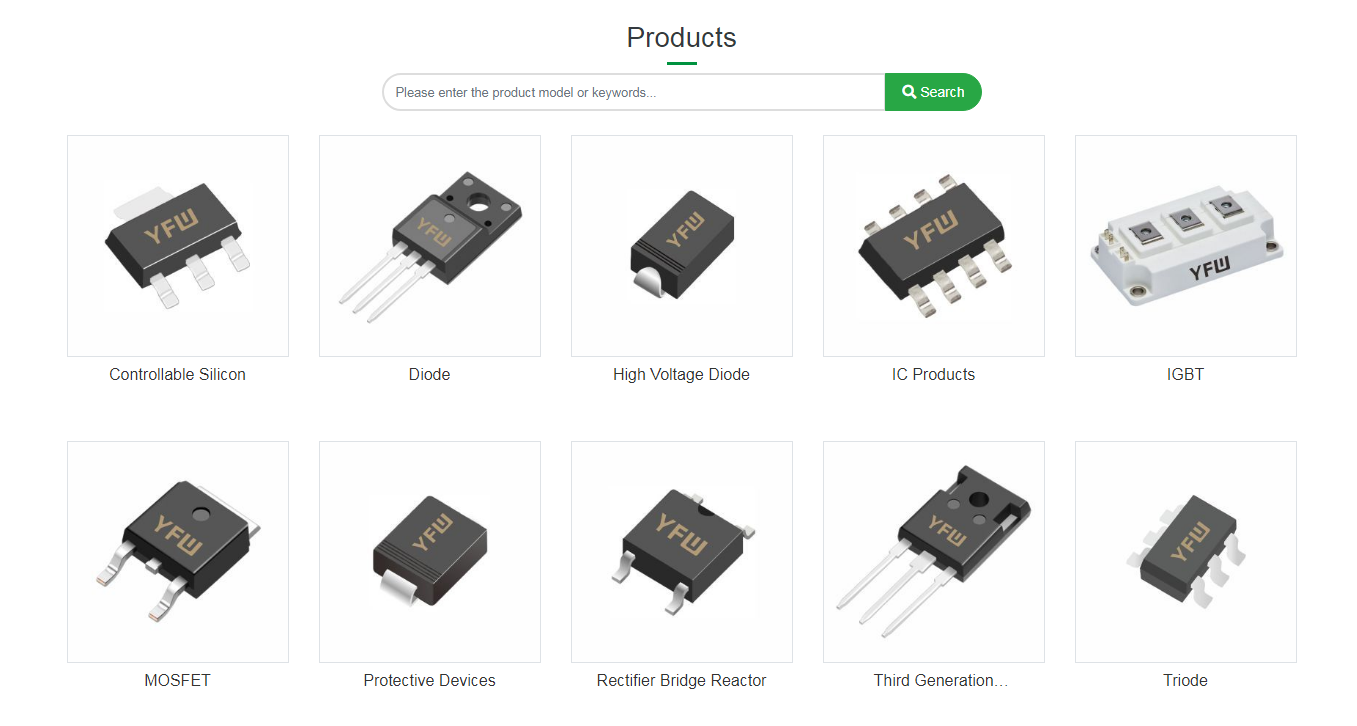Date:2025-03-18 Categories:Industry News Hits:898 From:Guangdong Youfeng Microelectronics Co., Ltd(YFW)
Rel are electrical devices widely used in industrial control systems, capable of performing functions such as signal conversion, amplification, and switch control in circuits. In relay applications, it is common to see diode connected in parallel to the relay coil, which plays a crucial role in enhancing the stability of the circuit and protecting circuit components. This article will analyze the function of a di parallel to a relay coil and the importance of this design in electrical control systems. When the relay coil is energized, a magnetic field is generated inside the coil, whichns or weakens with the change in current. If the current is suddenly cut off, the magnetic field will quickly disappear. According to Faraday's law of electromagnetic induction, changing magnetic field will induce an electromotive force (EMF) in the coil, which is in the opposite direction to the original current, known as the back electromotive or induced EMF. The instantaneous peak of the back EMF can be very high, potentially damaging sensitive components in the relay control circuit, such as transistors and integrated circuits.To understand the function of a diode connected in parallel to a relay coil, we need to be familiar with the working principle of the relay and the electromagnetic phenomena it produces. Rel use electromagnetic effects to achieve control. When the relay coil is energized, a magnetic field is generated, attracting the contacts to close, thus controlling the on-off state of the. When the relay coil is de-energized, the magnetic field disappears, and the contacts return to their original position, breaking the circuit. In this process, due to characteristics of an inductive component (such as a relay coil), when its current suddenly changes, a significant induced EMF will be generated in the circuit, a phenomenon also known as electromotive force. The magnitude of the counter electromotive force is related to the speed of current change and the inductance of the coil and is in the opposite direction the original current, which may damage other components in the circuit, especially semiconductor components. To suppress the impact of this counter electromotive force on the circuit, a diode often connected in parallel to the relay coil. This diode is usually called a flyback diode or a freewheeling diode. The diode connected in parallel the relay coil is in reverse bias during normal operation and does not affect the normal operation of the relay coil. When the relay is de-energized, the current in the suddenly stops, and the generated counter electromotive force causes the diode to be forward biased. At this time, the diode conducts, forming a circuit, allowing the current by the counter electromotive force to flow through the diode and the coil, effectively limiting the counter electromotive force to a lower level and reducing the impact on other parts the circuit. When connecting a diode in parallel to the relay coil, attention should be paid to its direction. The correct way is to connect the anode of the di to the negative end of the relay coil and the cathode to the positive end. In this way, the diode is reverse biased during normal operation and does not affect the operation the relay; when the relay is de-energized and a counter electromotive force is generated, the diode is forward biased and can effectively conduct the current generated by counter electromotive force. The main advantages of using a diode connected in parallel to a relay coil include: 1. Suppressing the counter electromotive force protecting circuit components, especially for weak signal circuits and sensitive semiconductor components, this protective effect is very important. 2. Reduce electromagnetic interference, since the current generated by the counterromotive force is limited to a smaller

Previous: 1139/2000 The working principle and application circuits of Zener diodes
Next:NZT560A 1A 80V SOT-223 Marked NZT560A Small Signal Transistor Y Micro Brand